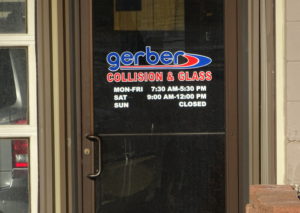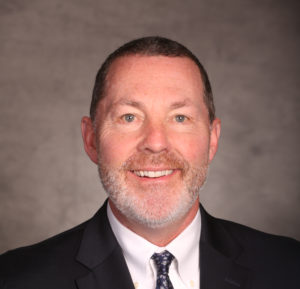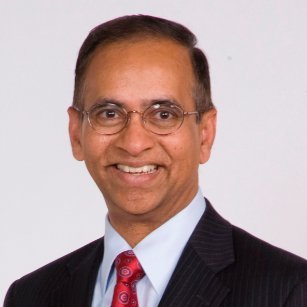
Gerber Collision parent to resume buying locations, restarts capital spending in own shops
By onAnnouncements | Business Practices | Market Trends | Repair Operations | Technology
Gerber Collision owner Boyd Group Services last month told investors it had re-entered the mergers and acquisitions game and had resumed spending to upgrade existing facilities.
CEO Tim O’Day told an earnings call Aug. 12 that Boyd stopped M&A because of the “significant uncertainty” at the beginning of the pandemic and discomfort over the idea of staff traveling to purchased body shops to integrate them.
“We are once again beginning to evaluate growth opportunities as they emerge,” CEO Tim O’Day said during a second-quarter earnings call Aug. 12. The company has more than $1 billion available to spend on deals.
At about the halfway mark of the third quarter, the collision repair conglomerate’s same-store sales sat 14-16 percent below 2019. It has recalled employees back to work and resumed full production at shops it had temporarily converted to intake centers.
The Boyd Group’s interests span the U.S. and Canada and include Gerber, Boyd Autobody, Assured Automotive, Glass America and Gerber National Claim Services. Though the company is based in Winnipeg, Canada, at least 85 percent of its income stems from the U.S.
O’Day said during a May 13 earnings call Boyd’s “biggest concern” in doing a deal probably wasn’t due diligence. Rather, the company needed to know that its acquisition integration team could travel to a new shop, he said then. “We’re not there yet,” he said at the time.

But last month, O’Day said he felt many had learned that more activity could be done remotely than expected. Boyd felt it could integrate a new shop with a “limited on-site presence,” he said.
He said the company had developed but not yet launched plans to support integration remotely.
Chief Financial Officer Pat Pathipati said Aug. 12 Boyd wouldn’t offer guidance on the proportion of acquisition targets which were MSOs versus small shops.
He said it would in the short-term examine acquisitions in locations its people could easily reach, and an attractive opportunity would be a higher priority. In the long term, the Gerber parent company would continue to focus on areas it looked to grow in the past, O’Day said. He said the pandemic wouldn’t cause it to shy away from a particular area.
Asked how Boyd’s current acquisition pipeline compared to the same time in 2019 and to May 2020, Pathipati said the company didn’t offer specifics. “Long-term, we don’t see any changes,” he said. Opportunities existed, but it couldn’t say if COVID-19 had increased their number, he said.
O’Day said Boyd had begun to evaluate growth opportunities, and it believed many external and internal opportunities would arise.
 Pathipathi said it was “a little early” to talk about opportunities involving distressed would-be sellers.
Pathipathi said it was “a little early” to talk about opportunities involving distressed would-be sellers.
It was too early to know if Boyd could buy facilities cheaper than usual, O’Day said. U.S. support for smaller businesses had been “pretty effective” in keeping shops open, he said.
Boyd both expanded its borrowing power and received more flexibility as a borrower during the COVID-19 pandemic. It also received an infusion of cash by issuing and selling 1.265 million shares of stock, grossing nearly $231.5 million. (All amounts in this article are Canadian dollars.)
However, Boyd ultimately wound up cutting down the amount it owed creditors, reaching $708.7 million in debt net of cash in the second quarter compared to $949.9 million on March 31 and $893.2 million on Dec. 31, 2019. (The Canadian company follows international IFRS accounting rules classifying $538.6 million in second-quarter leases as debt.) Asked Aug. 12 if the company planned to pay down debt, Pathipati said it already cut the balance quite a bit.
As noted above, the company has more than $1 billion in cash and available credit to buy auto body shops.
Focus analyzes M&A landscape
According to Focus Advisors, the industry already had seen a notable amount of deals despite the COVID-19 pandemic.
“The current level of mergers and acquisition activity keeps surprising us,” Focus Advisors wrote in a half-year assessment Aug. 10 — two days before the Boyd announcement. The financial consulting firm observed that “private equity firms have really stepped up their interest and investments.”
It mentioned prior activity at Gerber and Caliber and said “(f)ive super regional MSOs are also in acquisition mode. Add to these numbers several dozen sub-regional MSOs that are continuing to make acquisitions largely using internal capital sources.”
The company said a shop owner could do well as a seller — but also as a buyer, if they worked with private equity.
“Acquirers are still looking favorably on targets today,” Focus wrote. “In two years they may be less aggressive because they will have already bought their key platforms and may only looking for smaller fold-in acquisitions. For sub-regionals determined to grow into super regionals, accessing capital today is likely to be easier than in two years because of strong PE interest.”
Focus also shared some interesting perspective on how deals are structured these days.
“Five years ago, structures involved a variety of cash, stock, debt and earnouts with most deals being done for cash,” Focus wrote. “Some deals were done as stock purchases although most were asset purchases. Multiples ranged from 5-9x reconstructed EBITDA with some outliers for very large MSOs.
“Increasingly, deals are being measured on purchase price to revenues with smaller shops in the 35-45% and medium size MSOs in the 65-90% of revenues depending upon the strategic fit, EBITDA levels and ongoing management teams.
“Today we see the same variety of consideration with most all deals still being done as asset purchases. During this time of COVID, many are structured with both cash and earnouts with performance hurdles – some EBITDA based and some revenue based. Some are structured to share the risk between the sellers and the buyers. Multiples are trending lower for plain vanilla acquisitions but remain robust for quality platforms. OE certifications are driving increases in values – especially high-end brands.”
Capital spending
Boyd told investors in its May first-quarter report it had halted capital expenditure plans temporarily due to COVID-19. However, it reported Aug. 12 that it ultimately wound up spending 1.8 percent of sales ($7.8 million) last quarter on such upgrades — a proportion representing the high end of its pre-coronavirus projected capital spending range.
“The company has resumed its capital investment plans,” O’Day said on the call Aug. 12.
Boyd expects capital spending of 1.6 to 1.8 percent of “COVID-affected sales,” he said. The company posted $1.05 billion in revenue over the first half of the year, down 6.7 percent from 2019. (However, same-store sales — a truer measure of the COVID-19 impact — were down 17 percent to reach $896 million.)
In addition to these millions of dollars of upgrades, the company also has spent $2.9 million of what will be a separate $5 million investment in LED lighting. In additional to reducing energy usage, the LEDs would “enhance the shop work environment,” O’Day said. (He didn’t elaborate, but see some discussion here and here about why your body shop might thrive on better lighting too.)
O’Day said the company would also spend another $9-$10 million over the next 15 months to expand its “Wow Operating Way” to its corporate business processes.
More information:
“Boyd Group Services Inc. Reports Second Quarter 2020 Results”
Boyd Group Services, Aug. 12, 2020
Boyd Group Services second-quarter 2020 earnings call
Boyd Group Services, Aug. 12, 2020
“Focus Advisors 2020 Midyear Report”
Focus Advisors, Aug. 10, 2020
Images:
A Gerber location in Grand Rapids, Mich., is shown. (John Huetter/Repairer Driven News)
Boyd Group Services CEO Tim O’Day. (Provided by Boyd Group)
Boyd Group Services Chief Financial Officer Pat Pathipati is shown. (Provided by Boyd Group Services)
